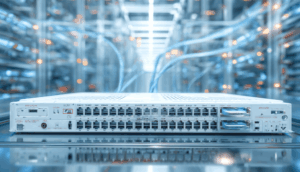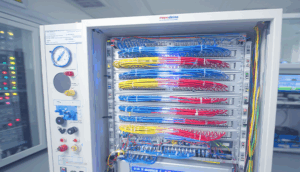CC-Link IE, a prominent industrial Ethernet standard, is vital for high-speed, deterministic communication in automated manufacturing environments. However, like any network, it’s susceptible to bottlenecks that can cripple performance and hinder productivity. Understanding the common causes of these bottlenecks and implementing proactive strategies to mitigate them is crucial for maintaining optimal system functionality. This article delves into the key factors contributing to CC-Link IE network bottlenecks and provides actionable insights to alleviate them.
One significant contributor is excessive network traffic. Unnecessary data transmission, often stemming from inefficient protocol usage or poorly configured devices, can saturate the network, leading to increased latency and packet loss. Regularly auditing network traffic using diagnostic tools helps identify bandwidth-hogging applications or devices. Implementing quality of service (QoS) mechanisms prioritizes critical data streams, ensuring timely delivery even under heavy load. Furthermore, optimizing the communication protocol configuration to minimize overhead and redundant transmissions can significantly reduce network congestion.

Another critical aspect is the quality and configuration of the network infrastructure itself. Substandard cabling, poorly terminated connectors, or outdated network switches can introduce signal degradation and intermittent connectivity issues, leading to retransmissions and ultimately, bottlenecks. Employing high-quality, shielded cables specifically designed for industrial environments minimizes electromagnetic interference (EMI) and ensures signal integrity. Regularly inspecting and maintaining all network hardware, including switches, routers, and connectors, is essential for preventing performance degradation. Upgrade network switches to those with higher bandwidth and better handling capabilities if needed.
Proper network segmentation plays a crucial role in minimizing the impact of localized issues. Dividing the CC-Link IE network into smaller, manageable segments using VLANs (Virtual LANs) isolates traffic and prevents broadcast storms from propagating across the entire network. This not only improves overall network performance but also enhances security by limiting the scope of potential breaches. Strategically placing gateways and routers to filter traffic and control access between segments further enhances network efficiency and security.
Finally, the configuration and performance of individual devices connected to the CC-Link IE network can significantly impact overall system performance. Regularly monitoring the CPU load and memory usage of PLCs, HMIs, and other devices helps identify potential bottlenecks at the device level. Optimizing the application code running on these devices, minimizing resource-intensive operations, and ensuring adequate processing power are crucial for preventing individual devices from becoming performance bottlenecks. Regularly updating firmware and drivers for all network devices is also important to ensure compatibility and address any known performance issues.
